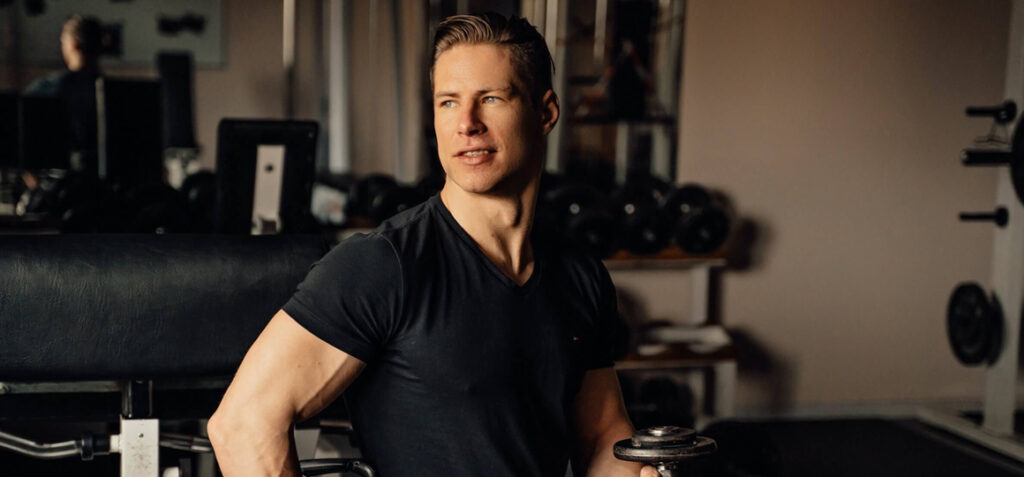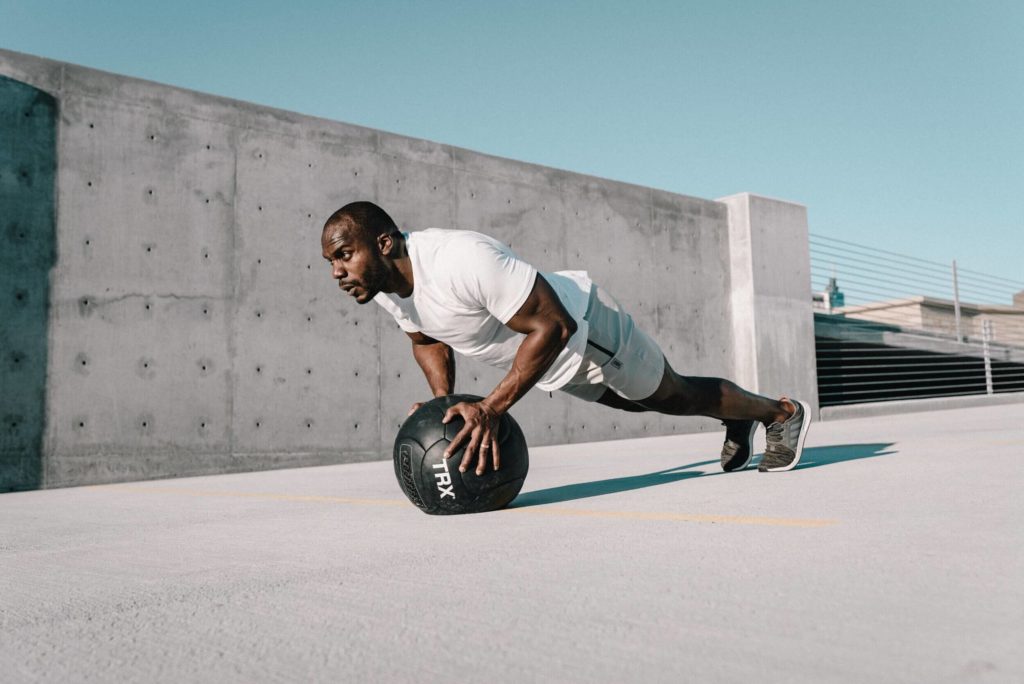Perhaps your mobility is impaired because of illness, injury, weight issues or a disability. WHO refers to a disability as an impairment of the body or the mind marked by activity limitation and participation restrictions. (12) Maybe you have diabetes, arthritis, cancer, or are frail and afraid of falling. None of these mean that you cannot exercise effectively. There are workouts you can do regardless of your age, physical condition or workout experience. Oftentimes, your workout routine needs to be examined and adjusted (with the help of a medical professional) to what your current needs may be. Some exercises will be easier than others, but any type of exercise can bring benefits into your life.
Exercising with limited mobility
Cardiovascular exercises are exercises that increase your heart rate while building your endurance. Variations on swimming, cycling, walking, water aerobics or running are options for those in a wheelchair or with impaired mobility. Many people suffering from mobility issues can benefit from exercising in water, as it lessens the risk of muscle or joint ache and upholds the body.
Strength training comprises weight and resistance training. It improves balance and helps to prevent falls and further injury. Strength training also builds muscle and bone mass. Upper-body strength training is the way to go for people with leg injuries/disabilities. Strength training for the core and legs is known to be useful for those with limited upper-body mobility.
Flexibility exercises help with range of motion, pain, stiffness and discomfort, all while helping to prevent further injury. Tai chi, yoga and various stretching exercises can be done to help reach flexibility goals. For a person with injuries or limited mobility in the legs, flexibility exercises can minimise or avert muscle atrophy. (8)
Starting an exercise routine
The key to starting an exercise routine is beginning with small, manageable goals and making them habits. You aren’t always going to feel like exercising, which is why you can’t rely on your motivation levels alone to ensure that the exercising is going to happen.
A habit is something we do repeatedly and consistently—we don’t have to think too hard about them, like brushing our teeth or driving a car. Research suggests that it takes anything from 18 to 254 days for a habit to stick and become instinctive. (15) The more we perform these actions, the more they are embedded in our brain. To make exercising a daily habit, it should be something you know you can accomplish. Small, attainable steps will help you reach your goals and make you feel like you can achieve even more! Don’t over plan and overcommit to the point that you become overwhelmed, frustrated, burdened and then eventually give up. Don’t be discouraged by setbacks and don’t skip warmups and cooldowns.
Write down your plan and when you intend to implement it—for example, five minutes of stretching after lunch or ten minutes of cardio in the morning. Plan a cue that will remind you of your time to work out. This could be programming an alarm on your phone or setting out your workout clothes in advance.
After your workout, it is important to give yourself a reward. This could be anything—a long hot shower or guilt-free time in front of the TV. You will start to look forward to these rewards and they will become an incentive to keep going! (4)
How to stay safe while exercising
Before you start any exercise, it is best to consult with your healthcare practitioner to find out what you should avoid, what types of activities you should do, how medications interact with your workouts and how often you should exercise.
One of the simplest and most important workout practices is staying hydrated. Be sure you wear comfortable clothes that do not restrict movement and footwear that provides proper support.
Avoid exercises that involve an injured part of your body. When you do start exercising after an injury, start slow. If you have a lower-body injury, focus on exercises for your upper body.
Listen to your body and stop if you feel pain. Do shorter workouts to avoid another injury or a high level of discomfort.
Nausea, dizziness, chest pain, shortness of breath, irregular heartbeat and discomfort are other signs to discontinue your exercises and rest.
Mental and emotional barriers to overcome
There are mental and emotional barriers to exercising, which can be compounded if a person has a particular physical challenge caused by an illness or injury.
If your mobility is impeded for whatever reason, get help to focus on the abilities you do have instead of mourning the exercises that are no longer an option for you. It may take trial and error, but with some creativity, you will be able to discover new workout routines that are compatible with your lifestyle.
If you are scared of injury, choose low-risk activities. Knowing what you are capable of and what would be beneficial for your skillset and situation is a great start.
Motivation can be another big obstacle to overcome! Planning ahead and making exercise a daily habit is key to getting more motivated. Journaling your reasons to keep trying regularly can boost your intrinsic motivation to work out. Finding an accountability partner is another great idea. Ask a friend to meet up and exercise with you, or just send each other messages and motivation when you finish your workout. (6)
Exercising with an upper-body disability or injury
With an upper-body injury or disability, the workout focus needs to be on the lower body. This is a time to make use of exercise machines that focus on the lower body, like a leg press or recumbent bike. This of course depends on your personal ability.
A few other lower-body exercises that do not require any special equipment are the sit to stand, sit and walk or kneel to stand. (7)
Sit to stand: While keeping your posture straight, sit on a chair and stand up straight, then return to a seated position. Do this several times to strengthen a weakened lower body and improve stability. Placing your hands on your knees helps with the push if necessary, or use a support bar attached to the wall. (13)
Sit and walk: This is done by placing two chairs opposite each other. Sit on one chair, slowly rise and walk to the other and sit down. Repeat the process. (13)
Kneel to stand: Kneel down and put one leg in front of you. While keeping your arms at your side, slowly lift up to a standing position. Repeat. This exercise helps with lower body strength, balance, mobility and stability. (13)
Isometric exercises
Isometric exercises are often appropriate for individuals who have limited mobility because of an illness or injury. They do not require special equipment, are generally easy to perform and often work well with weight-lifting exercises.
Isometric exercises work by isolating a specific part of the body and exercising an exact muscle group by remaining still. The most common example is the plank. Constant tension is placed on the muscles, which helps improve posture and physical endurance. The isometric contraction is held for several seconds or minutes. While the contraction is being held, the muscle tissue fills with blood and metabolic stress is created on the muscle; this benefits strength and endurance capabilities. (5) Individuals with physical disabilities can use specialised/therapy foam rollers to perform plank variations.
Electrical muscle stimulation
Electrotherapy, or electrical myostimulation, strengthens and stimulates the muscles after an injury through the use of electrical currents. An electrical current is created when electrodes are attached to the skin over the muscles. This current runs from a battery to the muscles, causing a contraction. Muscle function is enhanced when this current is repeated consistently. (3)
If you lose muscle because of injury or illness, electrical muscle stimulation can increase blood circulation and muscle mass. It is an effective therapy in several situations. People with type 2 diabetes can benefit from electrotherapy because it enhances the metabolism of blood glucose in the body, helping to better metabolise sugars.
Electrical muscle stimulation can stimulate the heart and lungs in the same way that exercise does. With electrotherapy, exercise capacity is improved, thereby allowing people with chronic heart failure (when the heart functions less effectively due to various reasons) to enhance their exercise capacity and reap the benefits they would get if they were physically exercising. (3)
Muscle degeneration can become an issue as people age. Muscle cell regeneration is improved with the use of electrical muscle stimulation therapy, making it a good option for those who are trying to safely and comfortably manage the loss of muscle mass and function because of end-stage renal disease, congestive heart disease or chronic obstructive pulmonary disease. (3)
Being confined to a wheelchair does not mean you cannot exercise. There’s wheelchair cardio, which is designed to raise your heart rate and burn calories. One of the primary ways you can engage in wheelchair cardio is through chair aerobics, a series of seated repetitive movements. A good example is air-punching (with or without weights), which is a great cardio workout. You can combine these with video games like Nintendo Wii, which can add an element of fun whilst increasing the heart rate and burning calories. (8)
Putting a resistance band under your wheelchair and doing some rapid resistance exercises is another way to build endurance and strength. (8)
Exercising in a chair or wheelchair
Pool therapy programmes are available for wheelchair users at some gyms and health clubs. Depending on your level of mobility, a water aerobics class would be worth participating in. (8)
Wheelchair sports are another option if you are looking to add some competition into your life. Softball, rugby, dance, football are just a few of the athletic opportunities available for wheelchair-bound people. (7) For increased flexibility and range of motion, you can learn chair yoga or tai chi. (8)
Exercises for people with disability and obesity
Exercise can be daunting if you have a severe weight problem and simply don’t know where to begin. The key is to get started; any movement is better than none.
A morbidly obese person (anyone who’s 100 pounds over their ideal weight) should seek monitoring and guidance before beginning anything too strenuous, as obesity can also be the cause of other health issues, like high cholesterol, high blood sugar and insulin resistance. (9)
Weight training exercises are a great place to start when facing obesity because they help build muscle that will aid in burning more calories. Many of these exercises can be done with limited mobility, even from a chair/seated position. Some are:
- Biceps curls: While sitting, hold light/medium-weight dumbbells. Keep the abs engaged, and without swinging your arms, curl the weights towards your shoulders. Make it a goal to eventually reach 16 reps.
- Seated ab rotation: Hold a dumbbell in front of your chest while sitting with good posture. Keep hips and legs facing forward and abs contracted. Rotate torso to the left, bring back to centre, rotate to the right. Reach 12 reps.
Some cardio machines, like a recumbent bike or a portable cycler, can work well for obese individuals, as they hold a larger body well. Biking is one way to burn calories without putting extra strain on the joints. (10)
Aqua jogging, which is running in the water with a buoyancy belt, and other water activities are also well suited for individuals with limited mobility and/or obesity. (10)
Flexibility and range of motion can be addressed through the practise of chair yoga. In-chair yoga, standard yoga poses have been modified to incorporate the use of a chair. The support of a chair ensures you don’t have to be overly reliant on your core strength, making it more accessible for those with disabilities or those who are obese. (11)
Conclusion
Impaired mobility and facing a disability doesn’t mean that you lose out on the benefits of exercise. Although a disability may constrain the types of exercise you can do, it is still possible to build strength and stay fit. Once you have spoken with your health care provider about what exercises you should do and what you should avoid, you must make your new routine an attainable habit. When exercise becomes part of your daily or weekly life, you will see results and feel stronger and healthier every time you accomplish your exercise goals. However, you must stay safe while exercising. Don’t exert yourself, especially when you have just begun a new routine, and accept there will be mental barriers to overcome on this journey. Adding variety to your routine usually makes it easier to follow.
If you have an upper-body injury or disability, there’s plenty of lower-body workouts you can focus on. If you don’t want to use any equipment, you can opt for isometric exercises and electrotherapy. Wheelchair-bound persons can benefit from various cardio and resistance exercises especially suited to their needs, along with wheelchair sports and yoga. Similarly, there are workout options for people with disability and obesity.
There are many sources and places of support that will help you find a new workout routine that you will look forward to and gain from. The key remains that you do some exercise as against none at all.
Disclaimer: The contents of this article are for general information and educational purposes only. It neither provides any medical advice nor intends to substitute professional medical opinion on the treatment, diagnosis, prevention or alleviation of any disease, disorder or disability. Always consult with your doctor or qualified healthcare professional about your health condition and/or concerns and before undertaking a new health care regimen including making any dietary or lifestyle changes.
References
- https://www.health.harvard.edu/mind-and-mood/exercise-is-an-all-natural-treatment-to-fight-depression
- https://www.webmd.com/fitness-exercise/ss/slideshow-exercise
- https://www.webmd.com/pain-management/what-to-know-about-electrical-myostimulation
- https://www.verywellfit.com/ways-to-make-your-exercise-habit-stick-4142816
- https://www.medicalnewstoday.com/articles/isometric-exercises#definition







